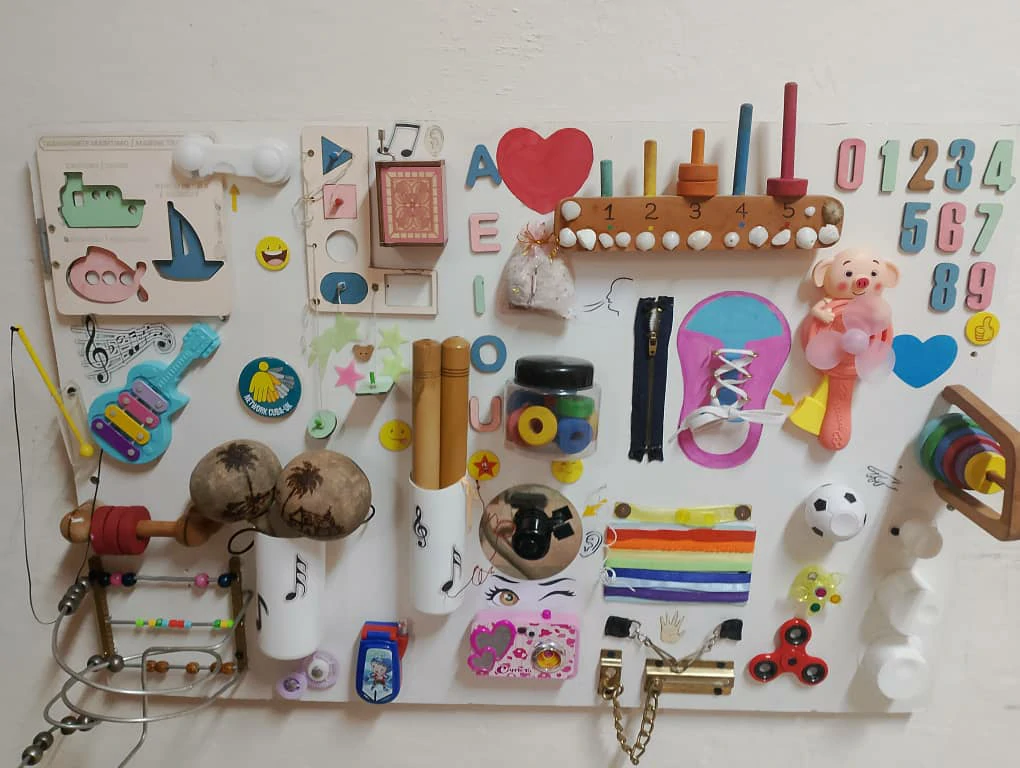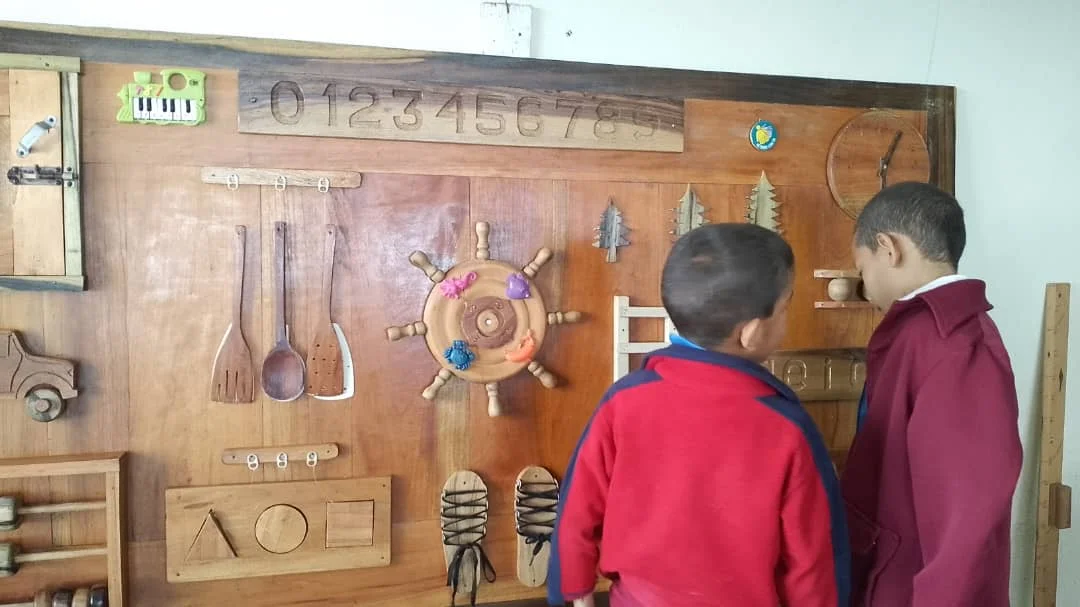What we do
Sensory Panels
The Importance of Understanding Learning Styles and Using Sensory Panels to Enhance the Skills of Children with Disabilities

Inclusive education aims to ensure that all children, regardless of their abilities or conditions, have access to learning opportunities that meet their individual needs. In this context, understanding different learning styles becomes crucial for educators and therapists seeking to adapt their methods to each student. Learning styles represent the ways in which individuals process and comprehend information, and for children with disabilities, this understanding is especially relevant. Through multisensory tools such as sensory panels, it is possible to create a learning environment where each style can be accommodated, thus facilitating skill development and meaningful learning for every child.**
Learning Styles and Their Impact on Child Development
Learning styles describe the different ways people assimilate information and acquire knowledge. In the case of children with disabilities, adapting teaching methods to their specific learning styles can make a significant difference in their development. Some of the most common learning styles include visual, auditory, kinesthetic, and multimodal. Each of these styles caters to specific needs:
– Visual: These children learn best with images, graphics, and colors. They respond well to visual stimuli and can retain information better when presented graphically.
– Auditory: They prefer verbal explanations, sounds, and melodies. These children benefit from activities involving music, storytelling, and conversations.
– Kinesthetic: They learn best through movement and object manipulation. Hands-on activities and physical games are key for this group.
– Multimodal: They combine elements of multiple styles, adapting according to the context and task at hand.
Understanding these styles allows for the design of learning environments that cater to each one, increasing the likelihood of success and encouraging children to actively participate in the learning process.

Sensory panels: a multisensory and adaptive tool
Sensory panels are versatile tools that feature a wide variety of textures, colors, sounds, and tactile elements, allowing children to explore and discover independently. For children with disabilities, these panels serve as an adaptive resource that enables the development of various skills in an accessible and engaging way. Their multisensory nature allows each child to interact according to their needs and preferences, ensuring that, regardless of their learning style, they find a way to engage with the panel. For example, a visual learner will be drawn to the colors and shapes, while an auditory learner will find stimulation in the sounds the panel can produce. Kinesthetic learners, on the other hand, will benefit from the ability to manipulate the physical elements of the panel, satisfying their need for movement and exploration. In this way, the sensory panel adapts to diverse learning styles, fostering inclusive education.

How sensory panels enhance the skills of children with disabilities
In addition to accommodating different learning styles, sensory panels provide a unique opportunity for the development of specific skills in children with disabilities:
Fine and Gross Motor Skills: Sensory panels often include elements for turning, squeezing, and sliding, which encourage the development of coordination and strength in the hands and arms. These activities are essential for fine and gross motor skills, fundamental abilities in childhood development.
Cognitive Skills: Exploring the different elements of the panel allows children to face small challenges and problems that stimulate critical thinking and problem-solving. Through experimentation, they develop cognitive skills that are important for their independence.
Communication and Language: By interacting with other children and adults, sensory panels can facilitate communication. Visual and auditory elements can motivate children to express their preferences and emotions, promoting language development and communication skills.
Socialization: These panels can be installed in common areas where multiple children can interact simultaneously, creating opportunities for children with and without disabilities to meet and collaborate. This fosters an inclusive environment and helps develop essential social skills.


Toward an Inclusive and Adaptive Education
By integrating sensory panels into educational and therapeutic settings, they not only facilitate personalized teaching but also create an environment where each child can learn and develop at their own pace. Additionally, they promote inclusive education, allowing children with diverse learning styles and conditions to actively participate in the same activities, contributing to equal opportunities and respect for diversity.
Understanding learning styles and utilizing multisensory resources such as sensory panels is a fundamental step toward inclusive and enriching education, where all children can maximize their potential and acquire skills that prepare them for a fulfilling and autonomous future.
